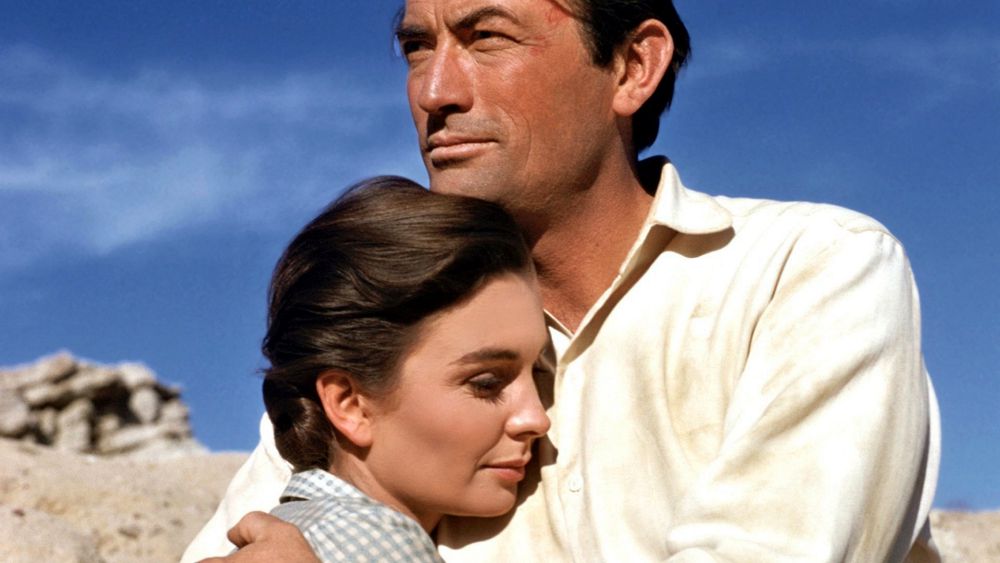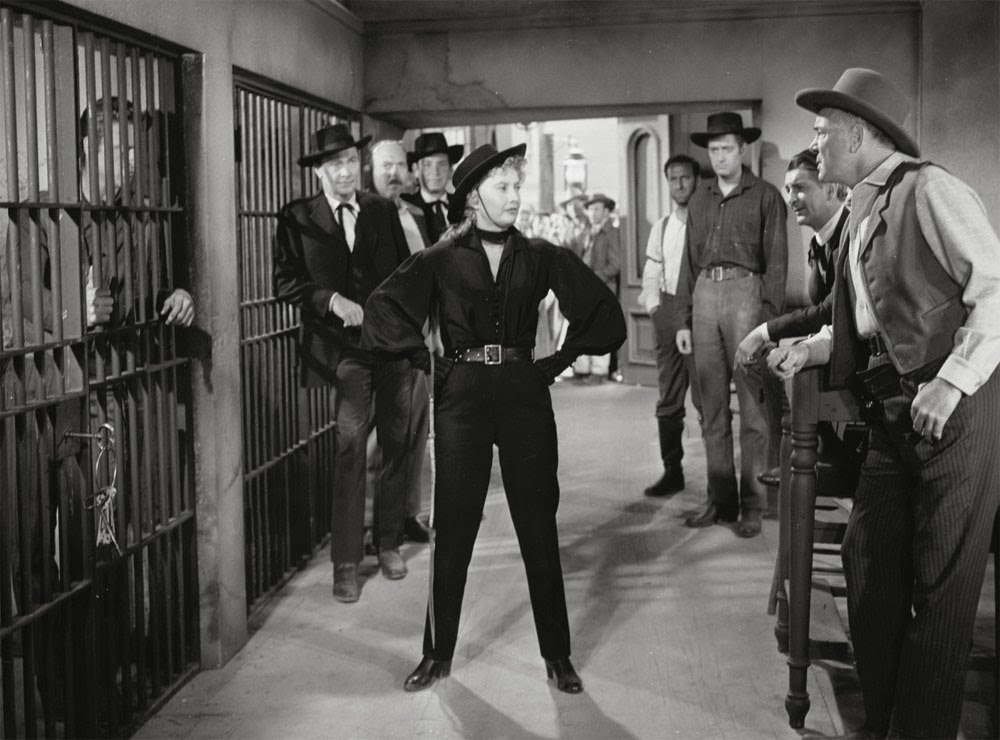
Movies pass on from the modern zeitgeist from time to time, particularly when the audience they were made for has largely left us. Even entire genres can begin to feel played out. In no case is this truer than with classic westerns. Filmmakers should be sure of themselves before striking out into territory so well covered in the past. Yet that doesn’t mean the classics are bad movies by any means. Many classic westerns still pack the punch they did in their heyday, with the added benefit of showing us where we – and the genre – have been.
1. Beyond the Law (1968)

A spaghetti western caper film starring Lee Van Cleef as Cudlip, a drifter with a pair of companions and a plan to steal a silver shipment from a mining community. They prefer to rob by trickery rather than violence. It’s a pleasure to watch Cudlip as he navigates a landscape made treacherous by his own lies. But he’s not the only one with designs on the silver. A gang of ruthless outlaws plans to steal the silver by any means possible.
It’s not easy to cast Lee Van Cleef as the star protagonist in a spaghetti western, because his face bespeaks villainy. He looks like he’s mean enough to shoot a man’s dog just for the pleasure of watching him cry. But casting Gordon Mitchell opposite him as the villain is certainly a step in the right direction, because he looks absolutely menacing without even raising an eyebrow. There are also some fine support performances here, and while this may not be an “A” movie, it’s certainly compelling enough to keep the butts in the seats and the eyes on the screen.
After stealing one payroll, Cudlip and his friends, a villainous preacher and a man named Sampson, are keen to steal another. They set up in town to begin putting their plans in place. Cudlip befriends a mining engineer who was placed in charge of the payrolls and ore shipments, Ben Novak (played by Antonio Sabato Sr.). Novak soon decides Cudlip’s skills with a gun are good enough to hire him on as a guard for the payrolls, which is exactly how Cudlip wants things – until he runs across the outlaws who also want the money. They save the payroll but only after a running shootout from the stage. Cudlip begins to catch feelings for a woman in town, and his attitude begins to change. Just in time for the final shootout. “Beyond the Law” has enough twists and turns to satisfy, and an ending that feels both surprising and rewarding.
2. The Big Country (1958)

You know Gregory Peck is a huge actor when he leads a western like “The Big Country,” with a supporting cast composed of Charlton Heston, Alfonso Bedoya, Chuck Connors, and Burl Ives, all of whom have carried lead roles themselves. But they’re needed for a movie this big, coming in at nearly three hours long with absolutely gorgeous cinematography and scenery.
Peck, as former sea captain James McKay, is the fish-out-of-water greenhorn, come west to Montana to marry the daughter of well-to-do rancher Henry “the Major” Terrill. He is soon put to the test by friend and foe alike as he’s seen as an undeserving tenderfoot (even his betrothed clashes with him). What they haven’t reckoned on is that while he may be inexperienced in the ways of cattle and life in the saddle, a life as a ship’s captain has imbued upon him an iron will. He soon finds ways to broaden his options.
Burl Ives puts in an especially good performance (for which he won Best Supporting Actor at both the Oscars and the Golden Globes) as rancher Rufus Hannassey. It’s truly Burl Ives as you’ve never seen him, he seems downright dangerous and unhinged. As a special note, fans of Nickelodeon’s “Ren and Stimpy” from the 90s will recognize several of Burl Ives’ lines from this movie as bizarre lyrics from “your old pal” Stinky Wizzleteats’ “Happy-Happy, Joy-Joy” song.
Things draw to a major head when the Major and his men retaliate against Hannassey and his clan for some shenanigans they pulled, beating and demeaning some of Hannassey’s men in town. This fuels a running clash that comes to a head in a confrontation of the kind that never truly settles anything, and the two factions are locked into a climax as large as the rest of the movie; it seems the new and unexpected future can’t proceed forward until the past has been expelled.
3. Hour of the Gun (1967)

James Garner (in one of his finest dramatic acting performances) and Jason Robards form the friendship at the heart of this retelling of the Gunfight at the O.K. Corral, and they don’t disappoint. On the one side, Garner’s Wyatt Earp is the principled and fair lawman that the real Wyatt Earp would probably never have been able to live up to. Jason Robards plays the dark and cynical Doc Holliday. Together they provide the contrast that so often makes a cohesive pairing.
“Hour of the Gun” purports itself to be “the way it happened,” and while it is more accurate than most of the O.K. Corral films that came before it, it does still have some big inaccuracies. Inevitably, it puts story before historical accuracy (forgivable since the purpose of the film is first and foremost to entertain), and indeed, one might wonder where the interest can be in watching yet another O.K. Corral movie, but this one does have many points in its favor. First, it gets the O.K. Corral out of the way first thing. Second, it shows a small portion of the court trials that came after, which are rarely covered by movies, but which are the genesis of much of the official transcript and are interesting to see, nonetheless. “Hour of the Gun” largely covers the hunt for the “Cowboys” that followed the famous showdown, with Robert Ryan as the primary opposition, Ike Clanton.
The subtext of the movie lies in watching Wyatt Earp and Doc Holliday slowly swap positions, with Holliday taking the mantle of the moral hero and Earp falling to his own thirst for revenge. Indeed, the opposition and transformations within the heroic duo play even larger than story of Earp hunting Clanton. In the end, the climactic battle goes entirely unspoken, only facial expressions and actions convey the thoughts of the duelists.
4. The Nevadan (1950)

Skilled stunt-riding, exciting gunplay, a strong romance secondary to the main plot, and the beautiful scenery around Lone Pine California are all western staples that The Nevadan does well. Where this movie sets itself apart from the norm is the mystery. Who is Andrew Barclay (Randolph Scott), really? How can a greenhorn dandy be so skilled at the ways of the rugged West? Why is he trying to aid the robber, Tanner (Forrest Tucker)? Even Tanner doesn’t seem to know. What is known is that Tanner has hidden $250,000 in stolen gold (worth more than 8 million dollars in today’s economy), and everyone in the territory seems to want it.
It’s easy to see how Randolph Scott became such a huge star in his day. Like John Wayne or Arnold Schwarzenegger who came after him, his acting consists largely of playing himself, but he’s a large enough personality to carry the lead in a major motion picture. It’s easy to see why, with his winning smile and strong personal magnetism, it’s a pleasure to root for him, even if it’s not immediately plain what his role in the film is.
Dorothy Malone plays against type in a surprising and refreshing performance as a strong and capable young woman who happens to be the daughter of one of the parties interested in the gold.
The truly entertaining part of the movie, though, is watching Scott and Tucker (of “F Troop” fame) manipulate each other in a chess match of double-cross and one-upmanship. Those waiting for a strong finish aren’t disappointed by The Nevadan. All the plotlines and characters throughout come together by the end for a satisfying finish.
5. Forty Guns (1957)

This unique movie may be one of director Samuel Fuller’s finest; it’s at least one of his most discussed. The entire film is beautifully shot (perhaps the most compellingly filmed movie on this entire list), with experimental shots that hark back to Fritz Lang’s “M.” It seems Fuller was also eager to show off the widescreen movie format with breathtaking scenery shots, but he also thoroughly used close-ups throughout the movie. The effect of all this is a highly stylized and beautifully done movie.
A female lead in a western movie is another unusual choice, and Barbara Stanwyck displays the talents that made her a living legend of the big screen in her own time in the role of powerful landowner Jessica Drummond. Barry Sullivan presents a strong showing as her romantic interest, Griff Bonnell, and he and his two brothers arrive in Tombstone, AZ, on a job for the Attorney General, looking to arrest a tough named Howard Swain for mail robbery. Unfortunately for them, Swain is one of Jessica Drummond’s forty hired guns (led by her evil brother, Brockie). She runs the territory by default, through force of arms, and even allows her men to menace and wreck up the town at their leisure. Griff and his kin stop Brockie in the middle of one of his rampages, with as little bloodshed as possible. Griff’s brother falls in love with a local woman, and he decides he’s going to stay on as the town’s lawman.
Meanwhile, Griff and Jessica begin to fall for each other when Griff saves her from being dragged by a horse during a tornado (films from this era don’t normally draw comments for special effects, but that’s where “Forty Guns” once again differs from the norm, with a nice tornado effect that, while it may not be photo-realistic, gets the job done, even in today’s era of easy digital effects).
The climax comes when Griff’s brother is shot by Brockie at his own wedding, and Brockie is arrested for murder. Jessica spends big money trying to set him free, but the jury doesn’t see things their way, leading Brockie to escape, inviting the climactic showdown, which may not include forty guns, but it’s intense and surprising.